Now we know that there is more to it than a leg bone being connected to a knee bone but now that we have the song stuck in your head, we’d like to tell you a little more about pediatric fractures. If you have a “little monkey” who is always jumping off of the bed, or falling at the playground, or crashing their bike, or… the list goes on and on… then it is important for you to have an understanding of the signs and symptoms of a pediatric fracture and why seeking medical treatment is so important.
Nearly 20% of children who seek treatment for an injury are diagnosed with a fracture. Boys are roughly 15% more likely than girls to sustain a fracture and the risk tends to increase with age. Pediatric fractures are different than fractures seen in adults; children have decreased bone mineral density, proportionally stronger ligaments and tendons, increased bone flexibility, and developing growth plates. These differences result in children having unique fracture patterns that require tailored treatment options.
THE BASICS OF PEDIATRIC FRACTURES
BUCKLE FRACTURES
If your child falls on an outstretched arm or takes a direct blow to the forearm or wrist, this could result in a buckle fracture. This type of fracture most commonly occurs in the radius, the bone that runs along the thumb side of the arm forming most of the wrist joint. When one side of the bone is compressed it may buckle rather than completely break due to children’s bones being softer and more able to bend. This incomplete fracture is called a buckle fracture. The symptoms of a buckle fracture could include pain with or without swelling, a bowed out appearance, tingling, numbness, limited movement and bruising.
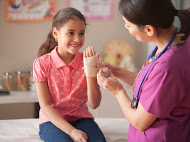
At Orthopedic and Shoulder Center we believe in minimum invasion while producing the maximum result!
GREENSTICK FRACTURES
If your child trips and falls directly on their arm, this could result in a greenstick fracture. A greenstick fracture is common in children because children’s bones are much more flexible than adult bones. Therefore, a fall can result in the child’s bone bending and cracking instead of breaking completely. Greenstick fractures are most common in the arms. Greenstick fractures can be non-displaced or have an obvious deformity.
AVULSION FRACTURES
If your child falls and twists their ankle, this could result in an avulsion fracture. An avulsion fracture occurs when there is a sudden forceful pull on a tendon while the bone is moving in the opposite direction. That forceful pull can break off a piece of the bone where the tendon is attached. Because children have proportionally stronger ligaments and tendons they are more likely to suffer an avulsion fracture than an adult. In adults the bones are stronger so the ligaments and tendons tend to be injured first, whereas in children the bone may fracture before the ligament or tendon is injured. This type of fracture is most common in the ankles, hips and elbows. The symptoms can mimic those of an ankle sprain so sometimes an avulsion fracture can be overlooked. The most common symptoms are severe pain and swelling that occurs almost immediately that could be followed by bruising and difficulty bearing weight on the injured side.
GROWTH PLATE / SALTER HARRIS FRACTURES
If your child falls off of their bike or takes a blow to their arm or leg, this could result in a growth plate fracture. This type of fracture is unique to children because they are still growing. Growth plates are areas of cartilage found in the long bones (femur, radius, ulna). They are located near the ends of bones and are the last part of a child’s bone to harden leaving this area more susceptible to fractures. Growth plate fractures comprise 15% of all childhood fractures and they occur twice as often in boys as in girls because girls’ bones finish growing sooner. This type of fracture is most common in the fingers, forearm/wrist, upper or lower leg, ankle and foot. The symptoms of a growth plate fracture typically include persistent or severe pain, visible deformity, inability to move or put pressure on the limb, swelling and tenderness.
TREATMENT—WHEN IN DOUBT, GET IT CHECKED OUT
If your child has a fall, collision or other accident and complains of any of the symptoms mentioned previously, the best advice we can give is: when in doubt, get it checked out. Treatment for a pediatric fracture will likely start with an examination from the physician and X-rays to determine if there is a fracture. If greater detail is needed the doctor may order additional diagnostic imaging tests such as an MRI or CT scan. Most fractures can be treated with immobilization by using a cast or splint or in the case of a clavicle fracture a sling. Non-displaced fractures can be treated without manipulation but if a fracture is displaced then it will need to be put back in proper position and alignment. The cast, splint or sling will protect the bones, keep them in the correct position, limit the child’s activities and allow for proper healing. Over the counter medications may be recommended to manage pain and swelling. Some therapy or exercises may be recommended once the cast or splint is removed to help reduce stiffness and regain full range of motion. Pediatric fractures are much less likely to require open surgery compared to adults, but in severe cases could require surgical intervention.
BONE HEALING IN CHILDREN
Children’s bones heal much faster than adults so it is important to seek treatment as soon as possible. Problems that could occur if a fracture is left untreated are: nerve damage, possibility for blood clots to form, improper healing/alignment, deformed limbs, limbs that are crooked or unequal in length or in severe cases loss of circulation to the bone resulting in the bone dying. Fractures heal at different rates, depending upon the age of the child and the type of fracture. For example, young children may heal in as little as 3 weeks, while it may take 6 weeks for the same kind of fracture to heal in teens. The younger they are, the faster they heal. Also, because a child’s bones are still growing they have the ability to remodel, meaning that the bone is able to straighten out and correct its own shape. Therefore, some fractures do not have to be perfectly aligned to heal properly and completely. It is best to consult your physician as soon as possible following an injury so the best plan of treatment can be determined.
At Orthopedic and Shoulder Center we are used to treating all age ranges and are no strangers to pediatric fractures. The next time your little one takes a tumble and you aren’t sure whether it is serious or not, trust Dr. Li and the rest of our staff to get your child back to running, jumping and shaking “dem skeleton bones”.

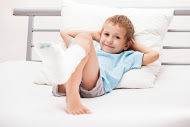

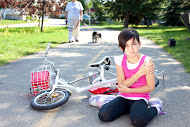
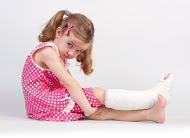
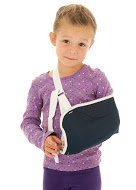
![Girl with Father Shoulder[3]](https://orthopedicshoulder.com/wp-content/uploads/2016/07/Girl-with-Father-Shoulder3.jpg)